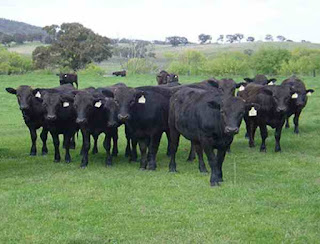The whole world is getting richer. Many people don't just eat beef anymore. They consumer premium quality and high priced Wagyu. It can cost as much as $200 a kilogram. Over valued? Perhaps so. I don't buy it. Then I am just too ordinary to care about.
It is the fastest growing breed. With cattlemen tripping over each other to get their hands on some young ones. It seems they are on to a good thing. The future looks really good with growing demand. Even meat from part bloods is fetching a solid price.
Trade descriptors of Wagyu are complex. Fifty percent with a Wagyu and another breed is termed F1. There are grades for quarter, eights and so on. A genome test is on its way to clearly define part Wagyu. This will end suspect claims by some growers of their partials.
Demand is greatly exceeding supply at present. Supply will rapidly rise in the next few years, however. It is the high price that is drawing investors in. Corporate money is flooding in. They have heard of the potential profit. Let us hope they don't kill the goose that lays the golden eggs!
◆ Agriculture by Ty Buchanan ◆
●
. . . . . . . . . . . . . . . . . . . . . . . . . . . . . . . . . .
WAGYU MEAT
#wagyu #beef #meat #food #pasture #paddock #cows #demand #profit
farming agriculture meat beef wagyu half part breed investment money stations farms articles news politics economics society anthropology historiography history sociology people nations country asia europe africa u.s. south america central Mediterranean eastern western interesting funny technology
WAGYU MEAT
#wagyu #beef #meat #food #pasture #paddock #cows #demand #profit
farming agriculture meat beef wagyu half part breed investment money stations farms articles news politics economics society anthropology historiography history sociology people nations country asia europe africa u.s. south america central Mediterranean eastern western interesting funny technology




